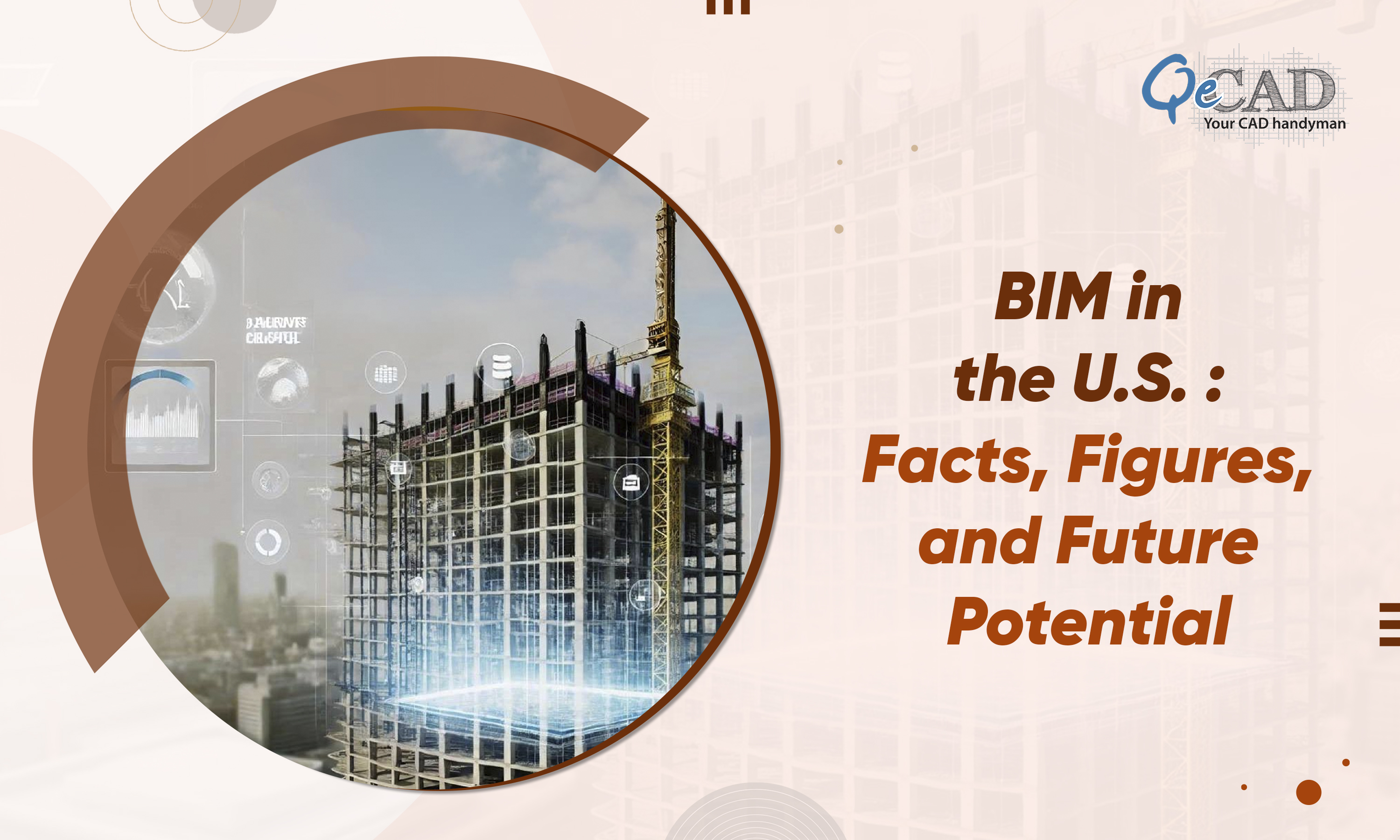
Introduction
The U.S. AEC industry is undergoing a profound transformation—driven by the need for faster project delivery, improved collaboration and sustainable building practices. At the core of this digital evolution lies BIM, a technology that’s not just reshaping the workflows but redefining what’s possible in the design and construction.
From streamlining coordination on the billion-dollar infrastructure projects to optimizing retrofits in the aging facilities, BIM is no longer a buzzword—it is a business essential. With increasing adoption rates and proven returns on investment, BIM is enabling the stakeholders across the U.S. to design smarter, build faster and even operate more efficiently than ever before.
This blog explores how the Architectural BIM Services and BIM Modeling Services are being applied in real-world U.S. projects along with the key data, trends and examples demonstrating as to why BIM is the cornerstone of the modern construction success.
The Growth of BIM in the U.S.
- According to a Dodge Data & Analytics Smart Market Report, 89% of the U.S. AEC firms are now using BIM on at least some of their projects.
- The U.S. BIM market is expected to grow at a CAGR of 13.8% from 2023 to 2030, reaching a projected value of USD 8.85 billion by 2030 (Source: Grand View Research).
- The U.S. federal government and large infrastructure agencies are increasingly mandating BIM for public projects, pushing widespread adoption across the states.
How BIM Is Revolutionizing the AEC Industry?
- Improved Collaboration
BIM fosters the real-time collaboration among the architects, engineers, MEP consultants and contractors using a shared digital model. Cloud-based platforms like the Autodesk BIM 360 allows the teams to work concurrently, reducing the miscommunication and reworks.
- Clash Detection and Risk Reduction
By simulating the in a digital environment, BIM enables the clash detection between the structural, architectural and MEP systems—saving time and preventing the costly onsite conflicts.
Case in Point: A hospital project in California saved over $1 million by resolving over 1,500 clashes before the construction began.
- Cost Control and Estimation
With 5D BIM, quantity take-offs and cost estimations are automated and more accurate. This allows for the real-time budgeting as well as the financial forecasting throughout the project’s lifecycle.
- Faster Project Delivery
Projects using BIM reports up to 30% faster delivery times as the design changes and updates propagate instantly across all of the drawings and even to the schedules.
Applications of BIM Across the U.S. AEC Sector
1) Infrastructure and Transportation
The California High-Speed Rail stands as one of the largest public infrastructure projects to implement BIM. It integrates the design and construction data for better lifecycle management and asset tracking.
2) Healthcare Facilities
Hospitals like UCSF Medical Center use BIM to manage the complex MEP systems ensuring the smoother coordination, compliance with the healthcare standards and even for the post-occupancy maintenance planning.
3) Commercial and Mixed-Use Developments
Retail chains and corporate campuses like Google and Amazon employs Architectural BIM Services for the design standardization, cost control and rapid rollouts across the multiple locations.
4) Renovations and Retrofits
With Scan to BIM and point cloud integration, the existing structures are digitally captured and modeled, streamlining the retrofit and renovation efforts in historic buildings as well as the aging infrastructures.
How U.S. Firms Are Embracing BIM for Competitive Advantage?
- Architects are using BIM Modeling Services for parametric design, energy modeling and even for visualizations thereby enabling the better design outcomes and the client approvals.
- Engineering firms benefit from better coordination with the contractors and facility managers through the model-based workflows.
- Contractors leverages BIM for 4D scheduling, logistics planning and prefabrication—reducing the wastes and even the labor costs.
- Facility Managers rely on BIM post-construction for the asset tracking, preventive maintenance and also for the fluent building operations.
Challenges Still Exist
Despite the benefits, challenges such as skill gaps, interoperability issues and cost of implementation continues to affect the smaller firms. However, the long-term savings and ROI significantly surpass the initial investment.
Conclusion: BIM is No Longer the Future—It’s the Present
As the U.S. AEC industry continues to digitize, BIM is at the forefront—helping the firms to deliver smarter, safer and more sustainable buildings. Whether it’s a transportation hub or a high-rise office tower, BIM is the foundation upon which the next generation of U.S. infrastructure is being built.
Looking to elevate your project with the power of BIM?
Partner with a reliable BIM service provider like QeCAD to ensure precision, performance and project success with the end-to-end BIM Services tailored to your needs.
